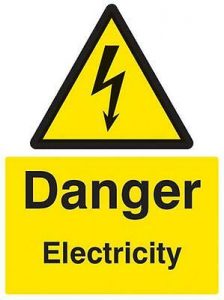 In the months leading up to March 2020, the Health and Safety Executive (HSE) is carrying out proactive inspections in businesses where welding takes place to check that risks are being appropriately managed, and has offered some advice on interim arrangements for businesses.
In the months leading up to March 2020, the Health and Safety Executive (HSE) is carrying out proactive inspections in businesses where welding takes place to check that risks are being appropriately managed, and has offered some advice on interim arrangements for businesses.
Eight hundred proactive HSE inspections are planned on metal fabrication businesses during the months leading up to March 2020.
Half of those inspections will take place in February 2020 and the HSE has estimated that the initiative will hit 1 in 15 fabrication premises.
Welding fume is one of the HSE’s priority health targets as are metal working fluid mists.
The HSE is emphasising that all welding fume can cause lung cancer, and potentially kidney cancer, so employers must put controls in place.
The Control of Substances Hazardous to Health (COSHH) regime provides the legal basis to help ensure exposure to any welding fume released is adequately controlled.
The HSE has published revised COSHH guidance, along with updated web pages on how to manage exposure to welding fume.
The HSE advises employers to carry out a full risk assessment before anyone starts welding work and notes that the Breathe Freely in Manufacturing Welding Fume Control Selector Tool can help identify the required controls.
Exposure to welding fume can be harmful so HSE inspectors will expect businesses to be able to demonstrate that they are properly protecting workers’ health.
However, the HSE says it recognises the changes might mean businesses need to plan for buying and implementing equipment if they don’t already have it in place.
The HSE recently said, “If you have already ordered new local exhaust ventilation (LEV) equipment but are waiting for it to be installed, then make sure you have an interim plan in place to minimise exposure, such as the provision of suitable respiratory protective equipment (RPE)”.
Contact us if you require guidance.
 The short answer is “because it’s every employer’s duty”. Being an employer is about much more than just obeying the letter of the law. You also want to make your workforce is as productive as possible and you need to attract talented people by being a good place to work.
The short answer is “because it’s every employer’s duty”. Being an employer is about much more than just obeying the letter of the law. You also want to make your workforce is as productive as possible and you need to attract talented people by being a good place to work.
The bottom line is that employers have a legal obligation to manage health and safety in the workplace. That means controlling risk. Risks can only be controlled once they have been identified and quantified.
That’s why it’s the responsibility of every employer to conduct a health and safety risk assessment. Defining the hazards present in the workplace so that action can be taken to manage them.
The law is crystal clear on this point. Businesses with five or more employees must not only conduct a risk assessment, but also record the findings in a written report. This information must be shared with employees carrying out the tasks that have been assessed, including those that may work in the same area.
Organisations with fewer than five employees are still required to assess the risks in the workplace. There’s no obligation to write the results down, but there’s a strong case for doing it anyway. Creating a written report clarifies matters, focuses minds and makes it much easier to update the assessment when things change, for example, if there is a new process or new equipment is introduced.
If you are confident you understand the risks in your workplace, you can conduct your own workplace risk assessment, however if you’re in any doubt about any aspect of the assessment or the level of risk, it’s wise to call in the experts. Conducting expert risk assessments is a key aspect of the service available from Walker Health and Safety Services Limited.
Before deciding whether you need expert advice, consider the worst-case scenario. Imagine finding yourself in court because of a Health and Safety incident in your workplace. That’s when an inaccurate or incomplete risk assessment can cost you a big fine, and perhaps even close the business down.
If you need to conduct a risk assessment or are not sure the one you have in place is fit for purpose, don’t hesitate to contact Walker Health and Safety Services Limited for advice.
 The Electricity at Work Regulations 1989 require employers to assess the work activities which use electricity, or which may be affected by it, and to put in place safe systems of work. There are also requirements in relation to the safe maintenance of electrical equipment and installations. Under the regulations, employers should ensure the following in relation to electrical equipment.
The Electricity at Work Regulations 1989 require employers to assess the work activities which use electricity, or which may be affected by it, and to put in place safe systems of work. There are also requirements in relation to the safe maintenance of electrical equipment and installations. Under the regulations, employers should ensure the following in relation to electrical equipment.
Portable electrical equipment can be described as equipment that is not part of a fixed installation but is intended to be connected to a fixed installation, or a generator, by means of a flexible cable and either a plug and socket, or a spur box, or similar means.
When using portable electrical equipment, employers should ensure the following.
Employees using the equipment (including extension leads) should be encouraged to look at it critically and check for signs that it may not be in sound condition.
Fixed electrical systems in new buildings have to comply with relevant building standards and controls and many now have integral safety features, such as residual circuit breakers. BS 7671 (IET Wiring Regulations, 18th Edition) sets the standards for electrical installation in the UK.
It is a legal requirement that all electrical work should be carried out by competent persons. A successfully completed electrical apprenticeship, with some post-apprenticeship experience, is one way of demonstrating technical competence for general electrical work.
Fixed installations and portable electrical equipment should be subject to a maintenance regime. This information should be kept by a H&S Representative.
Formal visual inspections should be undertaken by a suitably trained person. Periodic combined inspection and testing is the only reliable way of detecting certain faults, and should be carried out to back up the checks and inspection regime.
Contact us should you have any questions.
 Hello Everyone
Hello EveryoneI’m taking part in the RED January 2020 from 1/1/2020 to 31/1/2020 to raise money for Mind and I’d really appreciate your support.
Donating to my JustGiving page is easy – just follow this link and click Donate:
https://www.justgiving.com/fundraising/emma-woodhouse123
JustGiving sends your donation straight to Mind so it’s a quick and safe way to donate.
Thank you
Merry Christmas and a Happy New Year!
Emma
Walker Health and Safety Services Limited
 Every year, Emma dresses up as an elf and volunteers for Blist Hill museum. She sees many children hoping to make a good impression with Santa!
Every year, Emma dresses up as an elf and volunteers for Blist Hill museum. She sees many children hoping to make a good impression with Santa!
Christmas brings its own challenges, but how many of those classic health and safety issues we all hear about every year are true? Inspired by and using the Health and Safety Executive (HSE) festive myth busters, which do you think are “festive thumbs up” (true) or Bah Humbug (false)?
Bah Humbug and advice from Gov.uk says
You can clear snow and ice from pavements yourself. It’s unlikely that you’ll be sued or held responsible if someone is injured on a path or pavement if you’ve cleared it carefully.
Bah Humbug and the HSE say:
Each year we hear of companies banning their workers from putting up the Christmas decorations in their offices for ‘health and safety’ reasons, or requiring the work to be done by a ‘qualified’ person. Lets be sensible and provide staff with suitable step ladders to put up decorations rather than expecting staff to balance on wheelie chairs.
Festive thumbs up and advice from HSE says:
Lots of companies waste money in the false belief they need to test their Christmas lights annually, or even don’t put them up at all! By following a few sensible precautions, such as checks by the user for obvious signs of damage, every workplace can switch on safely and sparkle!
Bah Humbug and the HSE say:
Every year we hear inaccurate stories about children who aren’t allowed to throw snowballs, and swimmers who can’t take their traditional winter dip in the local lake – all this in the name of health and safety. We are expected to have snow this Christmas, so lets get out there and have a snowball fight!
Festive thumbs up and what the HSE say:
Finding a coin in your pudding on Christmas day – it’s a tradition that’s lasted for more than 500 years and is said to grant you a good luck wish for the coming year. However, killjoys have been stirring up trouble saying it’s too risky to put coins inside puddings for ‘health and safety’ reasons. Just be careful when taking a bite of pud!
If we had one wish, it would be to stamp out the health and safety Scrooges who try to dampen the Christmas spirit.
Merry Christmas and a Happy New Year to everyone!